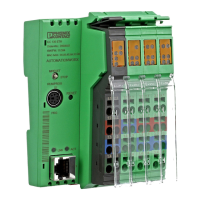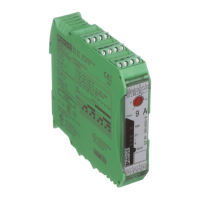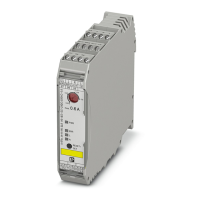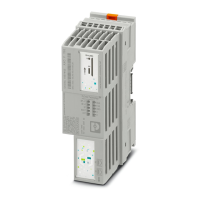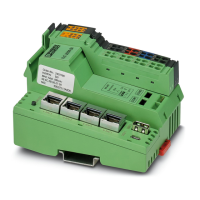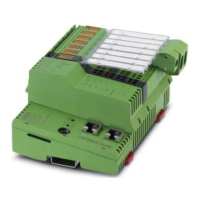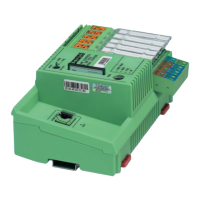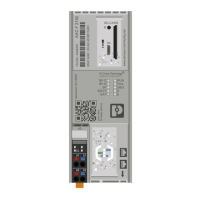Signal contacts and charging sequences
106377_en_04 PHOENIX CONTACT 27 / 68
5.5 Typical charging sequence
Table 5-4 Charging sequence according to the vehicle status
Vehicle
status
Status Description Signal CP
A No vehicle connected 12 V
B Vehicle connected Voltage at the CP signal drops to 9 V.
Resistance R2 in vehicle detected.
The voltage value at the CP signal is the result of the series con-
nection of resistor R1 in the charging controller, diode D in the ve-
hicle, and resistor R2 in the vehicle at 12 V.
When the charging station is ready to supply energy, the PWM sig-
nal is switched on. The ready-to-charge state can be reached
using input EN or the RS-485 communication interface. The pulse
width codes the permissible charging current that the vehicle may
take from the charging infrastructure.
The coding is shown in Table “Controlling the maximum charging
current that may be taken according to IEC 61851-1” on page 28.
B1 (9 V DC): EVSE not ready yet
B2 (9 V PWM): EVSE ready
9 V
C Charging without ventila-
tion
If the vehicle detects the PWM signal, the vehicle connects an-
other resistor R3 parallel to R2 via switch S2. The resulting voltage
value is 6 V (ventilation not required) or 3 V (ventilation required).
The charging controller connects the mains voltage to the vehicle
via a charging contactor and a charging cable. The charging pro-
cess begins.
By default upon delivery, charging process D is not supported, and
the charging process is aborted.
Charging in status D can be supported using a configuration.
When configuring a digital output for the “status D” event, an exter-
nal ventilation can be connected. This ventilation is not monitored.
The ventilation must be monitored using suitable measures.
6 V or 3 V
D Charging with ventilation
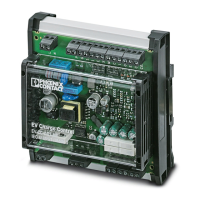
